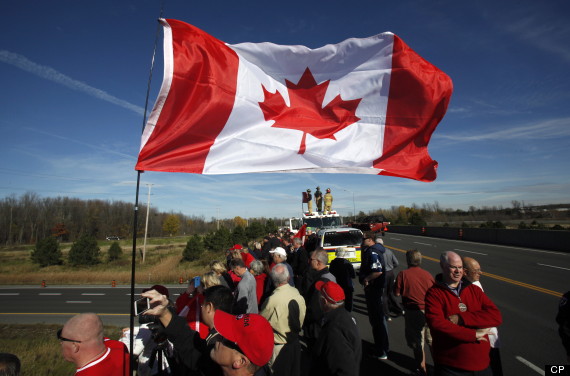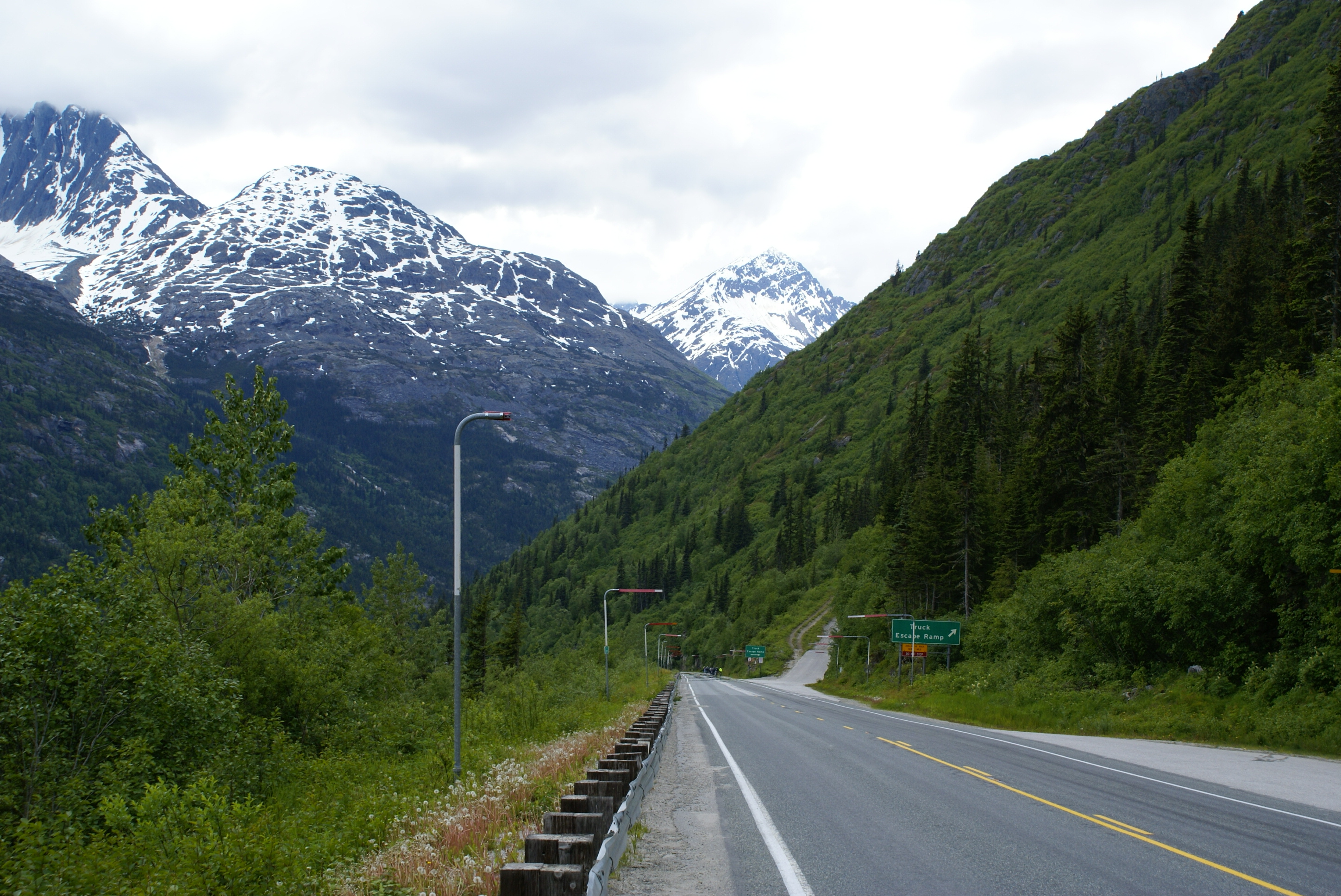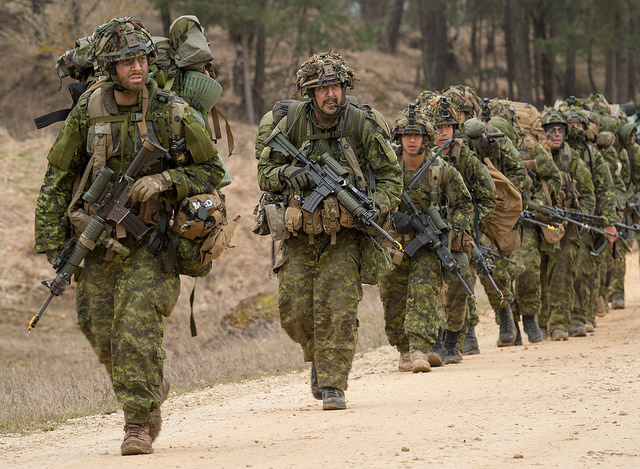On November 22, 2016, the Trudeau government announced a decision to buy 18 Boeing F/A-18 E/F Super Hornets, an improved version of the ageing CF-18 Hornet, as an interim gap measure to allow Canada to carry on its NORAD and NATO commitments. Defense minister Harjit Sajjan also announced that an open competition to find a permanent replacement for the RCAF’s CF-18 Hornets will take place before the end of the Trudeau government’s term in 3 or 4 years. Experts have suggested that Ottawa should consider a mixed fighter fleet composed of non-stealthy improved 4th generation jets and stealthy 5th generation platforms., that could be a high/low mix comprised of a small number of exquisite and unproven Lockheed Martin F-35 Lightning IIs and a greater number of combat-proven and improved Boeing F/A-18 E/F Super Hornets including the electronic warfare (EW) variant, the EA-18G Growler.
By buying a small number of F-35s in addition to a bigger acquisition of Super Hornets, the Trudeau administration will avoid a multi-billion-dollar lawsuit from Lockheed Martin given that the previous government announced it’s intention to acquire 65 F-35s in 2010.
Moreover, a mixed fleet comprised of a few F-35s and more numerous Super Hornets will allow the Canadian aerospace industry to benefit from being part of both Lockheed Martin and Boeing’s global supply chains thus preventing job and revenue losses. Indeed, Lockheed informed the Trudeau government that it is ready to exclude Canadian aerospace companies from any future contracts related to the F-35 if Ottawa buys another jet to entirely replace its CF-18s. It is worth remembering that Canadian companies received $750 million in contracts associated with the F-35 in the past 15 years. Moreover, it is estimated that Canada’s aerospace sector will benefit from $9 billion in industrial work over the course of the F-35’s service life if Ottawa orders the stealth plane. In addition, a parallel acquisition of Super Hornets will enable Canada to remain part of Boeing’s supply chain. Boeing employs 2000 people in Winnipeg and 560 companies are sub-contractors for aircraft components for planes including the Super Hornet. Additionally, in the event Ottawa opts to buy Super Hornets, Boeing promises to offer 100% of industrial offsets.
By acquiring a high/low mix fighter fleet comprising a few F-35s and numerous Super Hornets (including Growlers), the RCAF will be prepared to counter emerging peer and near-peer competitors looking to counter Western air forces’ air supremacy through the development of access/area denial (A2/AD) capabilities which are weapon systems designed to make an airspace off-limits to an adversary. Only a mixed fleet can address the growing A2/AD threat since 4th and 5th generation aircrafts compensate for each others’ weaknesses. Indeed, thanks to its stealth, its unmatched ability in fusing data collected from its multiple high-tech sensors into actionable intelligence transmittable to other planes, the F-35 will act as a survivable Intelligence, Surveillance, Target acquisition and Reconnaissance (ISTAR) platform for Super Hornets in an increasingly contested airspace.
In other words, the F-35 will be a stealthy spotter and a command and control (C2) node that can operate close to enemy forces to identify targets for the non-stealthy Super Hornets acting as airborne missile platforms flying at a safe distance from the A2/AD envelope. The far-flying Super Hornets can then launch long-range missiles which are guided by the F-35’s sensors towards the targets it previously identified. Unlike 5th generation fighters that have a limited payload since they must carry their weapons internally to not give away stealth, 4th generation jets carry a lot more missiles externally given their non-stealthy layout. Hence the complementarity between the F-35 acting as a scout and the Super Hornet operating as a flying arsenal.
Furthermore, the complementarity between 4th and 5th generation platforms works in another crucial way. As part of A2/AD capabilities, peer competitors like China and Russia are developing radar systems able to detect, track and target stealth jets like the F-35. Consequently, the F-35 will not be able to operate safely as a spotter in contested airspace. Therefore, if it is to perform the ISTAR mission within the A2/AD envelope, the F-35 must be supported by an EW aircraft which is the antithesis of a stealth aircraft with its numerous apertures such as podded jammers under the wings to jam enemy radars. As such, the most capable EW platform today is the EA-18G Growler, a variant of the Super Hornet capable of jamming all types of radar systems including those designed to detect, track and target 5th generation planes.
Critics argue that Canada cannot afford a mixed-fighter fleet because of two distinct supply chains and training regimens. However, this force structure is being adopted by numerous allied countries including the US. In consequence, there will be a demand for Super Hornets and F-35s for years to come whether for new jets or spare parts. Indeed, the US Navy being critical of an all-stealth fighter force, envisions a 2040 mixed naval aviation force structure where a significant number of updated Super Hornets and their EW variant continue to serve alongside a smaller number of F-35Cs tasked with ISTAR.
Moreover, it is worth noting that the improved Super Hornet might operate beyond 2040 in non-US service. Indeed, some countries in the next decades will not be able to get their hands on the F-35 for financial or political reasons thus leaving them only with the option of improved 4th generation fighters such as the Super Hornet. Such is the case of Kuwait that recently acquired 30 Super Hornets from the US instead of F-35s due to Washington’s concerns for Israel’s security in the Middle East. As a result, it is worth bearing in mind that the high cost of maintaining an eventual RCAF mixed fighter fleet will be compensated by the fact that the Canadian aerospace sector will meet the demand for F-35s and improved Super Hornets for decades to come.
Photo: US F-35s and Super Hornets (2015) by Lt. Cmdr. Darin Russell via Wikimedia. Public domain.
Disclaimer: Any views or opinions expressed in articles are solely those of the authors and do not necessarily represent the views of the NATO Association of Canada.




